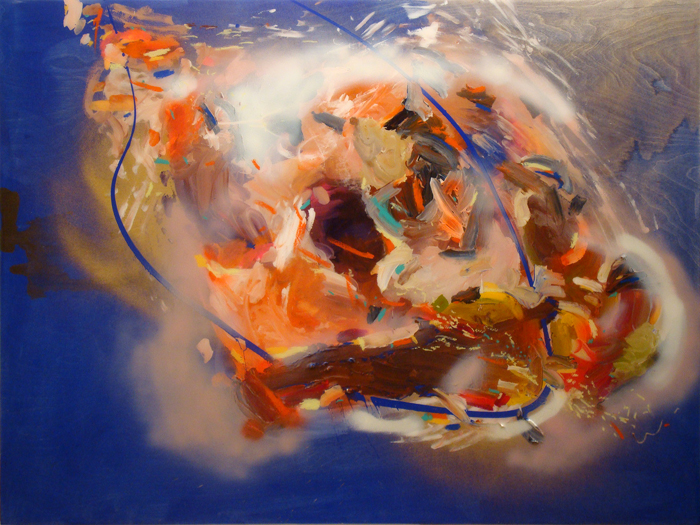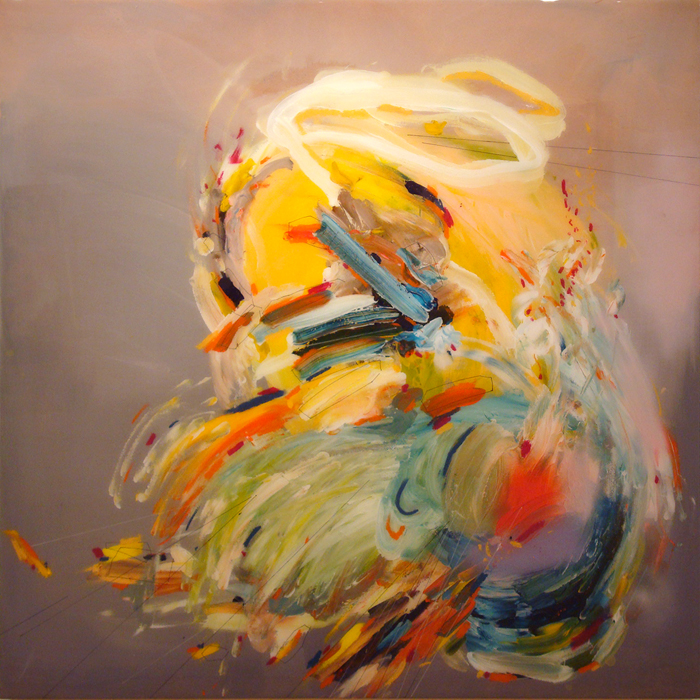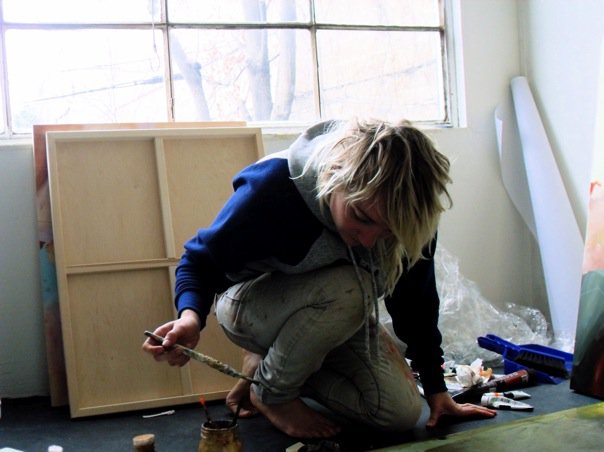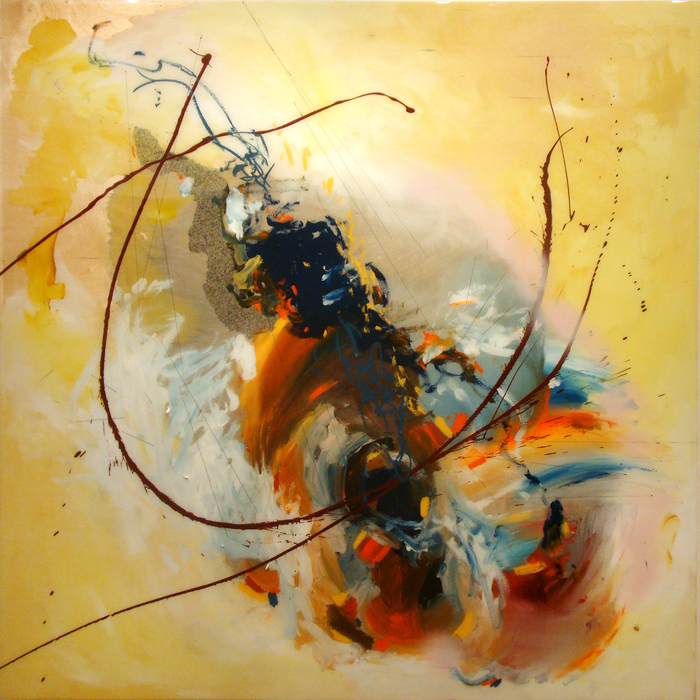Interview with Janna Watson (J.W.)
by artoronto.ca (Emese Krunak-Hajagos, E.K-H.)
E.K-H: Your show of paintings at Bau-Xi Gallery was a success and you are considered a very successful young artists. What kind of emotions are coming up for you at this significant moment in your early career as an artist?
J.W: There are many emotions coming up for me at this time.
there are satisfied emotions
unsatisfied emotions
there are many emotions.
(always).
E.K-H: Please tell us something about the process of working on a series of paintings. Do you focus on one painting until it’s finished, or work on a number of paintings concurrently as you develop a body of work? Do you have a vision of the end result of the painting at the outset, or does it emerge primarily through the experience of making the work?
J.W: You are correct that it emerges through the experience of making the work. My process is completely intuitive and therefore is coming directly from my body. I never have a vision of the end result (although I trust my foresight). In this process my paintings may seem extroverted and gregarious and loud with colour, but the truth is that they are about interiority and the creative disclosure of being from inside out. I am usually working on two or three paintings at the same time. A lot of the process is about allowing myself to experience a work and then leave it—maybe for a few hours or maybe for a few days. Coming back to the work over again for a few times allows me to see it with “new eyes.” Sometimes I feel so “inside” the work that I can’t see it at all. It is as though I am standing an inch in front of a mirror. That is why space is important. Always. To see anything—but especially for painting.
E.K-H: What are some specific aspects of visual culture that influence your works?
J.W: Negative space is very important to my work. Sometimes it is what I do not see that helps me to see. My point is that I am not influenced by visual culture. I am always slightly insulted when people tell me that my work reminds them of someone (or something) else’s (even though it’s usually meant to flatter or compliment). I am not interested in mimicking or exploiting someone else’s genius. I stare at blank walls, explore outer space in my mind, walk through nature, take my glasses off and walk blindly through streets. If I feel like painting after an activity that involves emptying my mind, it is usually for the best.
 After Pulling My Heart Out Of TheGutter 1, 2011
After Pulling My Heart Out Of TheGutter 1, 2011
E.K-H: In your life outside of your studio, where do you notice colour and light that inspires the colour and luminescence you create in your work?
J.W: In my friend’s eyes. In my cat’s eyes. In random strangers’ eyes (if I happen to feel extroverted enough to make eye contact). Also sunsets.
E.K-H: When we talk about abstract painting we always go back to the Abstract Expressionists and their emotional approach. Have there been any significant artists working in this tradition who have influenced your work?
J.W: The philosophies of abstract expressionism really resonate with me. I believe in the spirituality of form and colour beyond anything else in painting. It is obvious upon first glance of a painting if someone is vibrating with their painting—generally if an artist has vibrated with their work—their (sensitive?) viewer will do the same. Rothko was genius and sensitive enough to articulate his process. I would also have to mention Kandinsky and one of my all time favourite expressionists, Cy Twombly. I love his whimsical obsession with mark making and childlike gestures. I find his rawness absolutely sophisticated.
 Asking To Be Childlike Again, 2011
Asking To Be Childlike Again, 2011
E.K-H: What excites you about the experience of paintings that is missing from other forms of art-making?
J.W: Painting is about the body. It’s sexuality and spirituality made tangible—a good painting does not come from the brain. It is about alchemy. It is the most transformative form of art-making.
E.K-H: What are your plans? Do you have any exhibitions lining up for you?
J.W: I just got a new studio (March 1st) at 401 Richmond. This is good because my studio has been in my home and I really feel it’s time to create more negative space between my living space and my working space. I’m looking forward to the “walk” to the studio. Bau-Xi is always lining up exhibitions for me. I want an exhibition in China. I don’t know. I never know what is next.
E.K-H: I love your titles. Where do they come from?
J.W: I want my titles to be another entry into the work. I find it so boring when artists are not thoughtful about titling their work. It’s like naming a book—or is like putting a lyric to a musical composition. It may (or may not) make any more sense, but it at least leads your imagination down a certain road.



